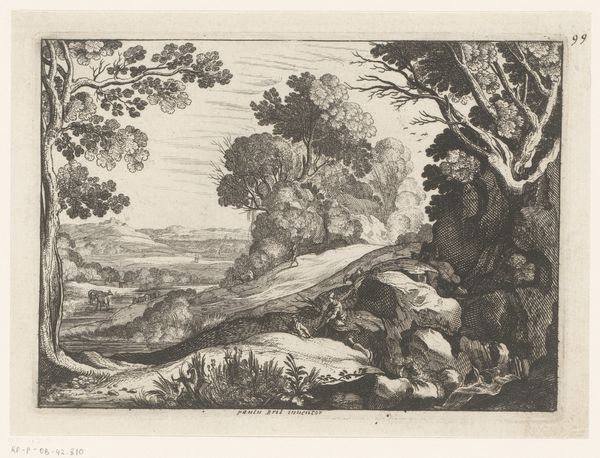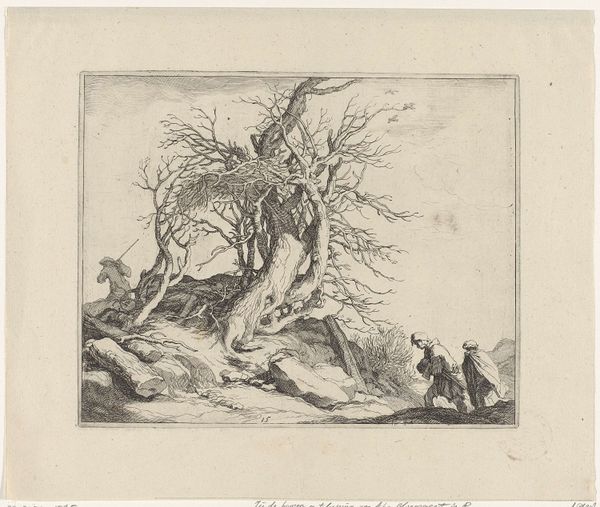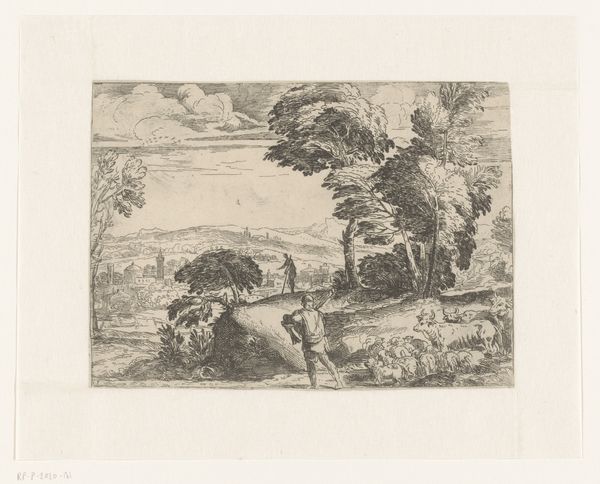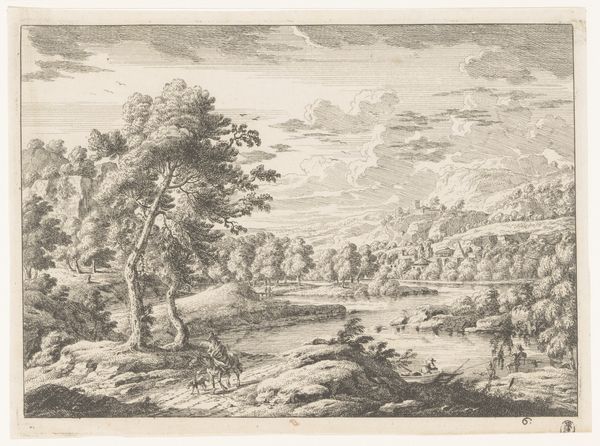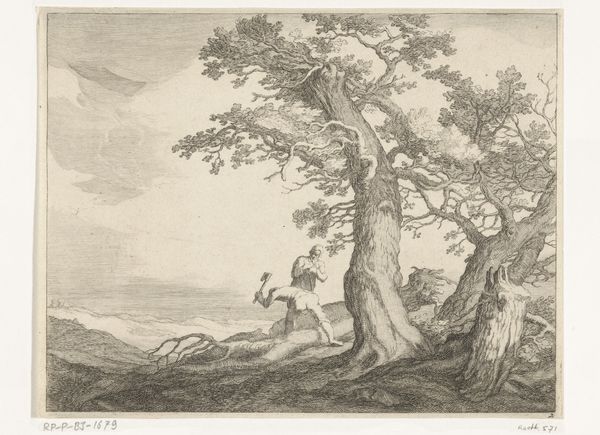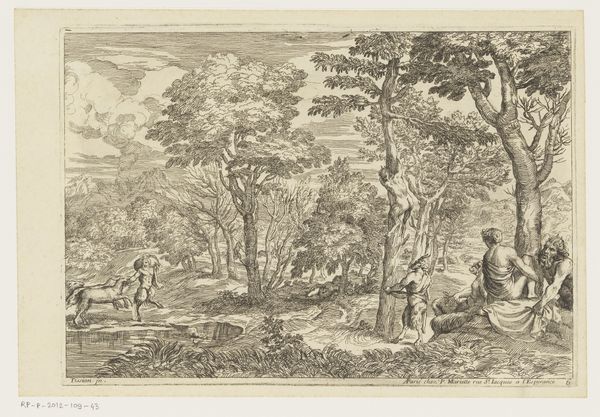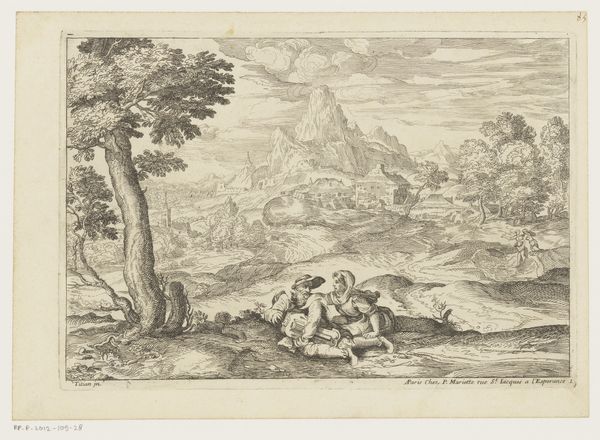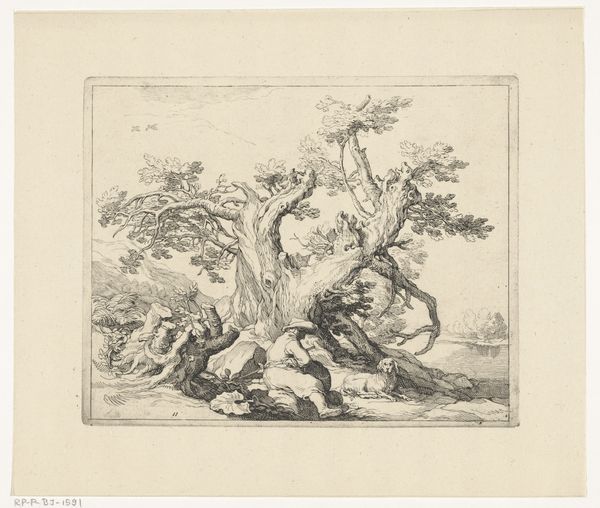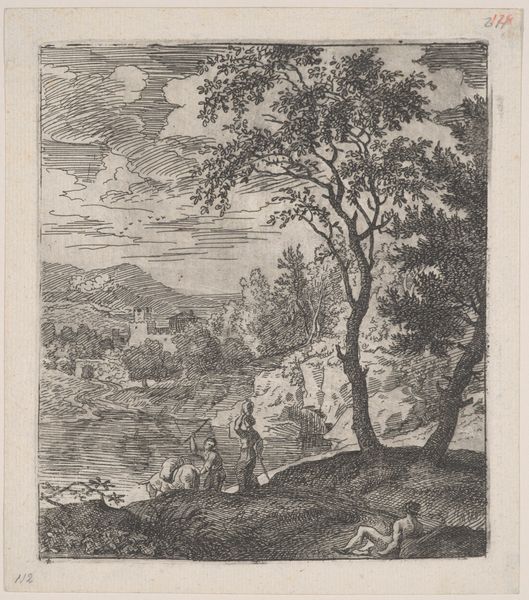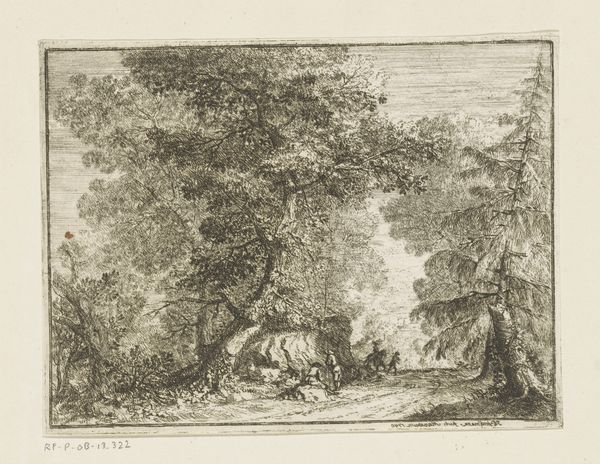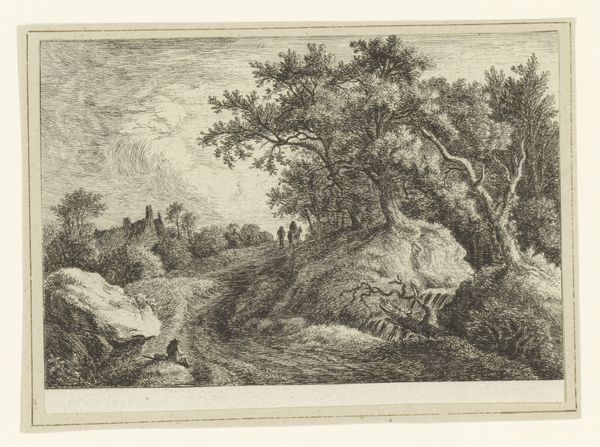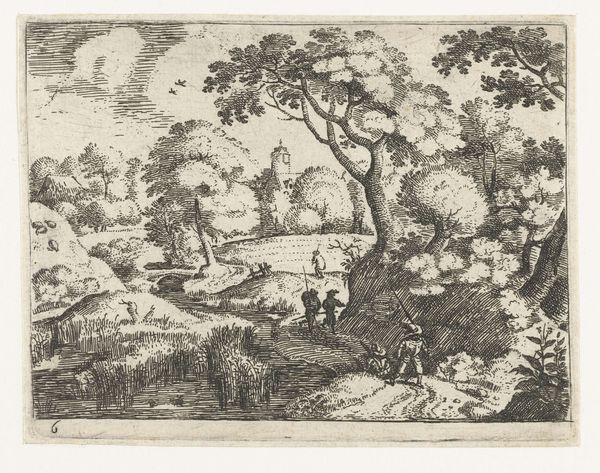
print, etching
#
tree
#
narrative-art
#
baroque
# print
#
etching
#
old engraving style
#
landscape
#
figuration
#
line
Dimensions: height 92 mm, width 120 mm
Copyright: Rijks Museum: Open Domain
Curator: Here we have Romeyn de Hooghe’s 1668 etching, “Bliksem slaat in een laurierboom,” or “Lightning Strikes a Laurel Tree.” It's quite a dramatic scene rendered with meticulous line work. Editor: It certainly is dramatic! The lightning bolt slicing through the tree immediately catches the eye. There’s a strong diagonal composition at play, directing the gaze from the top left to the bottom right. Curator: De Hooghe was known for his engravings that often served as political commentary. This particular piece, beyond its literal depiction, might allude to sudden, unforeseen upheaval in the social order of the time. The laurel tree itself traditionally symbolizes victory and status. Editor: So, the lightning striking it could represent a fall from grace, or the shattering of power structures. Visually, I am captivated by the rendering of movement, especially in the figure recoiling in the foreground. Curator: Yes, consider the historical context: The Dutch Republic experienced significant political shifts and power struggles in the 17th century, making this imagery quite resonant. Printmaking allowed for the wide dissemination of such commentary, shaping public opinion. Editor: The artist has achieved such dynamism by using fine, directional lines to imply a whirlwind of movement. See how the lines curve to indicate the movement of the foliage and how they give depth to the clouds. There is even implied texture in the tree trunk, and consider how small and vulnerable the figures look, in relation to the immensity of the landscape. Curator: Precisely. The print becomes more than just a pretty picture; it's a visual record of its time. These scenes also reinforced cultural beliefs about divine intervention. Editor: Looking at it from a purely formal perspective, one appreciates how effectively De Hooghe uses a limited range of tonal values to create such a vibrant image. It is as though he is seeking maximum impact from minimal means. Curator: Indeed. By intertwining meticulous artistry with potent socio-political symbols, Romeyn de Hooghe provides a fascinating lens through which to understand the 17th century Dutch Republic. Editor: I agree. He turns a natural phenomenon into something profoundly symbolic, and, I daresay, rather beautiful.
Comments
No comments
Be the first to comment and join the conversation on the ultimate creative platform.
